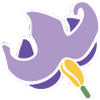n=12 (J. Prohens, pers. comm.)
Sub-Saharan Africa north of the equator, from Senegal, Mali, and Niger, to Ethiopia, Somalia, Sudan, and northern Kenya west to Burkina Faso and northern Nigeria; reported from Chad by Brundu & Camarda (2013); also common across the Middle East to western Pakistan; growing in thickets, scrubland, and savanna; 0-1900 m.
Solanum incanum is a member of the Old World clade of subgenus Leptostemonum (the spiny solanums; Levin et al. 2006); within that it belongs to the Eggplant Clade (Vorontsova eta al. 2013) and is one of the very close relatives of the cultivated eggplant (Weese & Bohs 2010; Knapp et al. 2013).
Brundu, G., Camarda, I. 2013. The Flora of Chad: a checklist and brief analysis. PhytoKeys 23: 1-18. doi: 10.3897/phytokeys.23.4752
Daunay, M-C., R. N. Lester, and G. Ano. 2001. Eggplant. In Tropical plant breeding, ed. A. Charrier, M. Jacquot, S. Hamon, and D. Nicolas, 199-222. Enfield, Plymouth: Science Publishers Inc.
Dunal, M.-F. 1852. Solanaceae. In Prodromus Systematis Naturalis Regni Vegetabilis vol. 13(1), ed. A. P. De Candolle, 1-690. Paris: Victor Masson.
Knapp, S., M. S. Vorontsova, and J. Prohens. 2013. Wild relatives of the eggplant (Solanum melongena L.: Solanaceae): new understanding of species names in a complex group. PLoS ONE 8(2): e57039. doi:10.1371/journal.pone.0057039.
Levin, R. A., N. R. Myers, and L. Bohs. 2006. Phylogenetic relationships among the “spiny solanums” (Solanum subgenus Leptostemonum, Solanaceae). Amer. J. Bot. 93: 157-169.
Samuels, J. 2013. An updated look at the taxonomy of the brinjal eggplant complex. In Proceedings of the XV EUCARPIA meeting on genetics and breeding of capsicum and eggplant, ed. S. Lanteri and G. L. Rotino, 253-261. Turin: Università degli Studi di Torino.
Vorontsova, M. S., S. Stern, L. Bohs, and S. Knapp. 2013. African spiny Solanum (subgenus Leptostemonum, Solanaceae): a thorny phylogenetic tangle. Bot. J. Linn. Soc. 173: 176-193. doi:10.1111/boj.12053
Local Names. Somalia: Moh (Darod language, Gillett 4127), Makarube (Maunder 69), Ducuur (Kuchar 17155). Ethiopia: Embaye (Amharic language, Archer 9623).
Uses. Medicinal, and used to tan leather.

Solanum incanum is distinguished by its lobed leaves with a yellowish color when dry (herbarium sheets), and abundant long-stalked indumentum. In Africa it mostly occurs to the north of the Kenya-Sudan border. Prickles are predominantly gently curved in African populations, but collections with long straight prickles have been made in Arabia. Herbarium specimens of S. incanum bear striking resemblance to the similarly yellowish and densely tomentose southern African S. lichtensteinii; the two species are not sympatric and geographical location data can greatly simplify the identification process. Lester (fide Daunay et al. 2001) cites a difference in fruit diameter (1.6-2.1 cm diameter in S. incanum versus 3.5-4.5 cm diameter in S. lichtensteinii), but measurements from herbarium specimens suggest the ranges overlap, with fruits 2.5-3.5 cm diameter in S. incanum and 2.5-4.5 cm diameter in S. lichtensteinii.
Solanum incanum is probably the closest African relative of the cultivated aubergine S. melongena (Weese & Bohs 2010), and forms part of a polytomy with S. insanum and S. melongena in an analysis with multiple accessions (Vorontsova et al. 2013); different markers will be needed to unravel the complex relationships in these close relatives of the cultivated eggplant.
The name “Solanum incanum” has been commonly and incorrectly applied to S. campylacanthum and numerous other species of prickly African solanums and care must be taken with the application of this name. Samuels (2013) incorrectly cited the neotype as occurring at LINN; the Burser herbarium is held at UPS.
In describing S. sanctum, Linneaus cited his own earlier species S. incanum in synonymy, making the former illegitimate. Dunal (1852: 369) cited S. sanctum in synonymy in his description of S. hierochuntinum, making this name also illegitimate; he stated he was changing the epithet to avoid confusion (“Nomen sanctum mutavi, quia pluribus speciebus confusis datum…”).